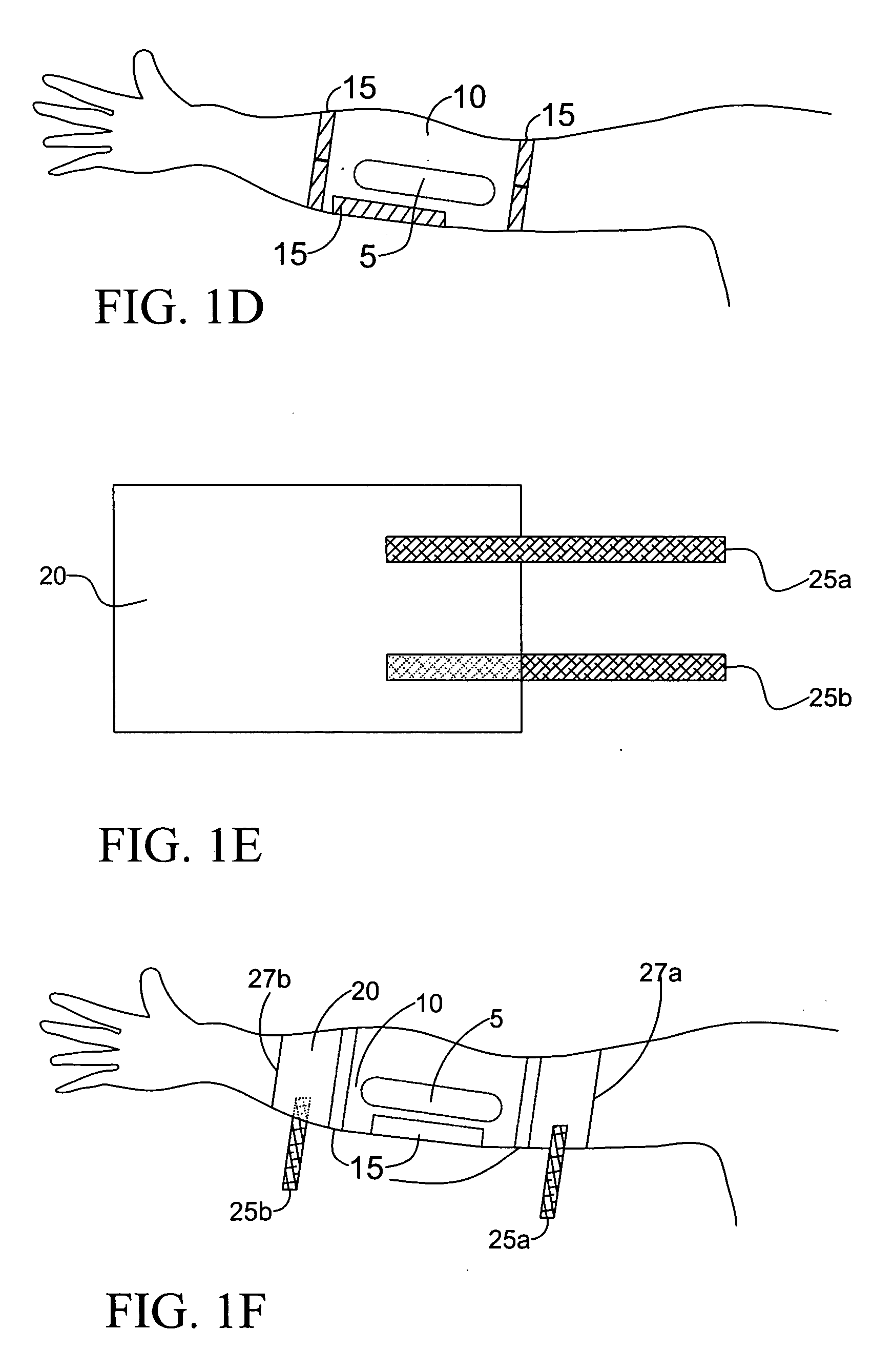Protective cover
a protective cover and cover plate technology, applied in the field of protective covers, can solve the problems of difficult protection of these sites from contamination or damage, exposure to external elements, water and detergents, etc., and achieve the effect of preventing moisture and other contaminants from entering
- Summary
- Abstract
- Description
- Claims
- Application Information
AI Technical Summary
Benefits of technology
Problems solved by technology
Method used
Image
Examples
Embodiment Construction
[0029] The invention is directed to a cover for a site on a patient which is associated with, for example, a wound or a port, either of which may or may not be covered by a sterile dressing, a cast, or any other such site which requires protection, and especially to a cover configured to provide protection from external elements to which a site may be exposed during, for example, bathing. The cover may be placed directly on the site, or may be positioned so as to provide a moisture barrier to a sterile dressing positioned over the site. For purposes of discussion, any references to the “site” to be protected may also include a sterile dressing covering such a site. Certain embodiments of the invention are in the form of a flat first layer covered by a flat second layer, each layer being configured to be sequentially positioned on a body portion of a patient and secured in place by an appropriate securing mechanism.
[0030] In one embodiment, the first layer may be a substantially rec...
PUM
 Login to View More
Login to View More Abstract
Description
Claims
Application Information
 Login to View More
Login to View More - R&D
- Intellectual Property
- Life Sciences
- Materials
- Tech Scout
- Unparalleled Data Quality
- Higher Quality Content
- 60% Fewer Hallucinations
Browse by: Latest US Patents, China's latest patents, Technical Efficacy Thesaurus, Application Domain, Technology Topic, Popular Technical Reports.
© 2025 PatSnap. All rights reserved.Legal|Privacy policy|Modern Slavery Act Transparency Statement|Sitemap|About US| Contact US: help@patsnap.com



